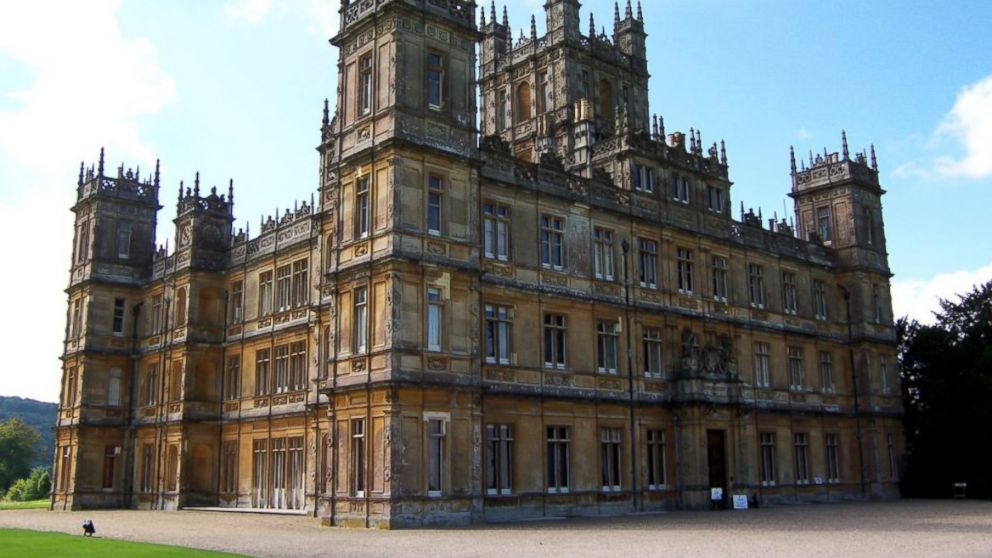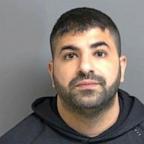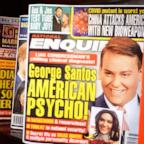Real-Life 'Downton Abbey': Real People, Places That Mirror Hit Show
Secret relationships. Heartaches. Money woes. The stories behind the hit show.

Dec. 26, 2013— -- intro:"Downton Abbey," which follows the daily lives and scandals of a wealthy, aristocratic family in early 20th century England, became a surprise smash hit on PBS.
A mash-up of period drama and pure soap opera theater, the series, now entering its fourth season, tells the story of Robert Crawley, the Earl of Grantham, his wife, Lady Grantham, their three daughters and the house staff through their secret relationships, weddings, heartaches and money woes, as World War I rages in the background.
Julian Fellowes, the creator of "Downton Abbey," said it was "very important" to him that the series be as historically accurate as possible.
"Even if you don't know anything about that period, there is something about it that you sort of think, 'I can believe this, I understand how it works,'" Fellowes told Amy Robach in an interview for the ABC News special "Secrets of the Castle: Beyond Downton."
While the family and their story are fictional, there are some examples in the show that mirror real-life places and people. Browse through a list of those here.
quicklist: 1category: Real-Life 'Downton Abbey'title: Highclere Castle, the Real-Life 'Downton Abbey'text:Seventy miles outside of London, in the rolling hills of rural England, is Highclere Castle, used as the set for the fictional "Downton Abbey."
But the castle has a real history steeped in British aristocracy. With its high-priced decor, the castle has belonged to the Carnarvon family for 300 years and is home to the Earl and Countess of Carnarvon. The house is so grand -- 120,000 square feet -- that the Carnarvons don't know exactly how many rooms there are.
"There's 200 or 300 rooms in the house and 50 to 80 bedrooms," Lady Carnarvon said.
When asked whether Highclere Castle was the inspiration for Downton, Fellowes said, "I've always loved it as a house, I find it very intriguing."
On "Downton Abbey," the home showcases a decadent way of life for the Crawley family, with an army of servants, cooks, kitchen maids, footmen and valets. They throw lavish parties and dress elegantly for every dinner.
In reality, Highclere Castle has hosted prime ministers, kings and queens. The family also rents out the castle for parties, corporate events and weddings.media: 21313115
quicklist: 2category: Real-Life 'Downton Abbey'title: Lady Almina, a Real-Life Lady Granthamtext:In Season One of "Downton Abbey," viewers learn that Lady Grantham, the Earl's wife Cora, is U.S. heiress whom Lord Grantham married to save his estate.
"She's an American looking at all her English family with bemusement, frustration, at times utter astonishment at what they take for granted about the way they behave and the things that drive them in their life," said Elizabeth McGovern, who plays Cora on the show.
Cora's story is an echo of Lady Almina, the great grandmother of Highclere Castle's current Earl of Carnarvon. Lady Almina was the fifth countess of Carnarvon and a rich heiress, but hardly an aristocrat. She was the illegitimate daughter of a banker from the wealthy Rothschild family and came with a large dowry.
"There were marriages, which were marriages of contract, as well of one hoped of love," Lady Carnarvon said. "Between Almina and her husband, actually it was one of love, and it was one of real money."
Armed with her father's money, Almina transformed Highclere Castle into a model of the modern age, having electricity and a telephone line installed.media: 21313058
quicklist: 3category: Real-Life 'Downton Abbey'title: Colin Edwards, a Real-Life Carsontext:On "Downton Abbey," Carson, the starchy butler, rules the Crawley household and its servant staff with a prim and proper fist. He also acts as sort of a counselor to Lord and Lady Grantham.
Carson's real-life counterpart is a man at Highclere named Colin Edwards, who has served three generations of Earls.
"I look after the family," Edwards said. "The dinners, the lunches, the breakfasts, generally just make sure they have everything they require."
He said a butler to the queen taught him everything he knows, from how to set a table for dinner, to how to properly serve a meal, to how to present himself to guests.
"You try to be as innocuous as you can but if you see something that needs doing, you do it," he said.media: 21313486
quicklist: 4category: Real-Life 'Downton Abbey'title: Inveraray Castle and the Duke of Argyll, a Real-Life 'Cousin in Scotland'text:In "Downton Abbey's" Season Three Christmas special, Lord Grantham, played by Hugh Bonneville, and his mother, Dowager Countess of Grantham, played by Maggie Smith, travel to Duneagle Castle in Scotland to visit their cousin "Shrimpy," the fictional Duke of Flintshire.
In real life, the castle used for Duneagle in the show is actually Inveraray Castle, the stately home of the Duke and Duchess of Argyll, and is located in western Scotland.
But the duke and duchess are nothing like the Crawley family on the show. Unlike the Crawleys, who have a huge servant staff that takes care of all the housework, Torquhil Campbell, who is the 13th Duke of Argyll, and his wife, Eleanor, are comfortable doing their own laundry and cooking meals for themselves.
“I think one of the things that we’re very proud of is the fact that this is not a museum, it’s a family home,” the Duke said. “This is where we live, where, you know, we’re part of it.”
The castle hosts daily tours, costing about $16 a person. Eleanor supervises the gift shop in the castle basement and even sells souvenirs herself, while the Duke signs books himself and supervises repairs to the castle’s electric gate.
"I have a view of the tourists coming through the castle, and at nighttime when you're having your supper, and you're engrossed in whatever is on the television at night -- and all of a sudden you turn around and there's this, 'Hi,'" the Duchess said.
To the duke and duchess, opening their home to the public is a way of bringing income, so both believe it's important to be hands-on in its care.
“I see myself as running a business,” the Duke said. “I just happen to have a name that I’ve inherited. So it’s my duty and responsibility to keep to those traditions.”
media: 21313386




